Growing herbs from seeds indoors is a rewarding project. It brings freshness and greenery to your home.
Now we talk about How to Grow Herbs from Seeds Indoors. Plus, you’ll always have fresh herbs ready for your meals. Starting an indoor herb garden might sound challenging, but it’s easier than you think. With the right approach, you can grow a variety of herbs right in your kitchen or living room.
Indoor gardening offers a practical way to enjoy fresh flavors all year round. You don’t need a big space or special equipment. Simple steps and a little care can lead to lush, fragrant plants. Whether you’re a seasoned gardener or a complete beginner, this guide will help you succeed. Let’s explore how to start growing herbs from seeds indoors.
Choosing The Right Seeds
Growing herbs from seeds indoors can be a rewarding hobby. To succeed, start by choosing the right seeds. The right seeds ensure healthy growth and a bountiful harvest. This section will guide you on selecting the best seeds for your indoor herb garden.
Table of Contents
Popular Indoor Herbs
Many herbs thrive indoors, providing fresh flavors year-round. Here are some popular choices:
- Basil: Great for cooking, especially in Italian dishes. Basil needs a lot of light.
- Mint: Perfect for teas and desserts. Mint grows quickly and can be invasive, so keep it in a separate pot.
- Parsley: A versatile herb that adds a fresh taste to many dishes. Parsley grows well in moderate light.
- Cilantro: Essential for salsa and other Mexican dishes. Cilantro prefers cooler temperatures.
- Chives: Adds a mild onion flavor to dishes. Chives are easy to grow and require minimal care.
Each of these herbs has unique needs. Understanding these can help you know how to grow indoor herbs from seed successfully. Using herb garden indoor planters can keep your plants organized and healthy. Below is a table summarizing the light and water needs of these herbs:
| Herb | Light Needs | Water Needs |
|---|---|---|
| Basil | High | Moderate |
| Mint | Moderate | High |
| Parsley | Moderate | Moderate |
| Cilantro | Moderate | Moderate |
| Chives | Moderate | Low |
Seed Quality And Sources
The quality of seeds is crucial for a thriving indoor herb garden. High-quality seeds have a better germination rate. Poor quality seeds may not sprout or produce weak plants. Here are some tips to ensure you get the best seeds:
- Check the packaging date: Fresh seeds have a higher germination rate. Look for seeds packaged within the last year.
- Buy from reputable sources: Purchase seeds from trusted companies. This ensures the seeds are true to their type and free from disease.
- Read reviews: Customer reviews can provide insights into the quality of the seeds.
There are various sources where you can buy seeds. These include local garden centers, online stores, and seed exchanges. Online stores offer a wide variety of herb seeds. Local garden centers can provide advice on how to grow indoor herbs in winter. Seed exchanges are a great way to get rare or heirloom varieties.
Growing herbs indoors in the winter can be challenging. Ensure you start with the best seeds to increase your chances of success. Below is a list of reputable seed sources:
- Baker Creek Heirloom Seeds
- Burpee
- Seeds Now
- Johnny’s Selected Seeds
- Seed Savers Exchange
Knowing where to get quality seeds helps you understand how to grow herbs indoors in the winter. Choose your seeds wisely, and you’ll enjoy fresh herbs all year round.

Essential Supplies
Growing herbs from seeds indoors is a rewarding and enjoyable hobby. It brings the freshness of nature right into your home. To start this delightful journey, you need a few essential supplies. These supplies not only help in the successful germination of seeds but also ensure healthy growth. From choosing the right containers and pots to selecting the best soil and drainage solutions, every step plays a crucial role. Let’s dive into the essentials you’ll need for your indoor herb garden.
Containers And Pots
Choosing the right containers and pots is vital for growing herbs from seeds indoors. The size and material of the containers can significantly affect plant growth. Small pots are ideal for herbs as they don’t require much space. Ensure that each pot has enough room for the roots to spread.
Here’s what to consider when selecting containers:
- Material: Clay, plastic, or ceramic. Each has its advantages. Clay pots allow air exchange. Plastic pots retain moisture.
- Size: 6-8 inches in diameter is usually sufficient for most herbs. Larger pots allow for better root development.
- Drainage: Essential for preventing root rot. Ensure pots have holes at the bottom.
Using a table can help visualize the options:
| Material | Pros | Cons |
|---|---|---|
| Clay | Breathable, natural look | Heavier, can crack |
| Plastic | Lightweight, retains moisture | Less breathable |
| Ceramic | Decorative, durable | Heavy, expensive |
Selecting the right containers helps your indoor herbs thrive, especially when learning how to grow indoor herbs in the winter.
Soil And Drainage
The quality of soil and proper drainage are crucial for growing herbs indoors from seeds. Good soil provides the necessary nutrients and a stable base for the plants. When learning how to grow herbs indoors in the winter, the choice of soil becomes even more important.
Here are some key points to consider:
- Type: Use potting mix specifically designed for herbs. It is lightweight and retains moisture well.
- Nutrients: Look for soil with added nutrients or consider organic options. They promote healthy growth.
- pH Level: Most herbs prefer a pH level between 6.0 and 7.0.
Proper drainage prevents waterlogging, which can damage roots. Here’s how to ensure good drainage:
- Use pots with drainage holes.
- Add a layer of gravel at the bottom of the pot.
- Avoid overwatering. Check soil moisture regularly.
These soil and drainage tips are vital for maintaining a healthy herb garden in indoor planters. With the right soil, your herbs will flourish, even in winter.
Planting Seeds
Growing herbs from seeds indoors can be a rewarding experience. It allows you to enjoy fresh herbs all year round, even during the winter. Planting seeds is a crucial step in starting your indoor herb garden. This guide will help you understand the best practices for sowing techniques, spacing, and depth to ensure your herbs thrive.
Sowing Techniques
Starting your herb garden with seeds requires proper sowing techniques. First, choose the right containers. Herb garden indoor planters with drainage holes are ideal. These prevent waterlogging and root rot.
Next, use a high-quality seed starting mix. This mix is lighter than regular potting soil, allowing seeds to germinate more easily. Fill your containers with the mix, leaving about half an inch from the top.
Now, it’s time to sow the seeds:
- Sprinkle seeds: Scatter seeds evenly across the surface of the soil. Avoid clumping them together.
- Cover lightly: Lightly press the seeds into the soil or cover them with a thin layer of the seed starting mix. The depth depends on the seed type, which we’ll discuss later.
- Moisten the soil: Use a spray bottle to mist the soil. Keep it damp but not soaked.
For optimal results, label your containers. This helps you keep track of which herbs are in each planter. Place the containers in a warm, well-lit area. A windowsill with plenty of sunlight works well. If natural light is limited, consider using grow lights.
Spacing And Depth
Proper spacing and depth are essential for healthy herb growth. Different herbs require different depths and spacing. Here’s a general guide to follow:
| Herb | Seed Depth | Spacing |
|---|---|---|
| Basil | 1/4 inch | 4-6 inches apart |
| Parsley | 1/4 inch | 6-8 inches apart |
| Thyme | 1/8 inch | 6 inches apart |
| Chives | 1/4 inch | 4-6 inches apart |
When planting seeds, ensure they are spaced correctly. Overcrowding can lead to competition for light, water, and nutrients. This can stunt growth and reduce yields.
Seeds planted at the correct depth have a better chance of germinating. If planted too deep, they may not receive enough light. If too shallow, they may dry out.
Remember to thin out seedlings if they grow too close together. This helps the remaining plants grow stronger and healthier. Use small scissors to trim excess seedlings at the soil level.
Learning how to grow herbs from seeds indoors involves paying attention to these details. Proper spacing and depth are key to a thriving indoor herb garden, especially in winter. With the right care, your indoor herbs can flourish, providing fresh flavors for your cooking year-round.
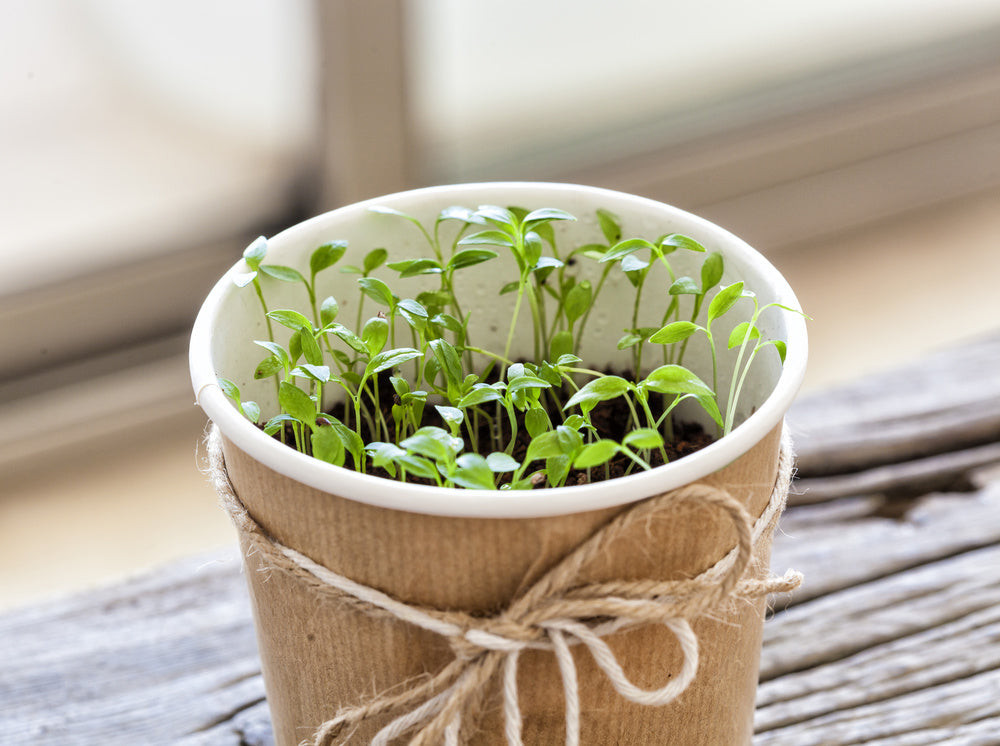
Optimal Growing Conditions
Growing herbs from seeds indoors can be a rewarding and practical endeavor. Having fresh herbs at your fingertips enhances your culinary experiences and adds a touch of nature to your home. To succeed, understanding the optimal growing conditions is crucial. This involves knowing the right light requirements, temperature, and humidity levels. These factors play a significant role in how to grow herbs from seeds indoors and ensure a thriving indoor herb garden.
Light Requirements
Light is a critical factor in how to grow indoor herbs from seed. Most herbs require at least 6 to 8 hours of direct sunlight daily. If natural sunlight is scarce, especially during winter, using grow lights can be beneficial. Place herb garden indoor planters near south or west-facing windows for maximum exposure.
Consider the following tips for optimal light conditions:
- Use fluorescent or LED grow lights for consistent light.
- Position lights 6 to 12 inches above the plants.
- Ensure lights are on for 12 to 16 hours a day.
Different herbs have varying light needs. Here’s a simple guide:
| Herb | Light Requirement |
|---|---|
| Basil | Full sun |
| Mint | Partial shade |
| Chives | Full sun to partial shade |
Understanding these light requirements helps in planning how to grow indoor herbs in winter, ensuring they thrive despite the shorter daylight hours.
Temperature And Humidity
Temperature and humidity significantly affect how to grow herbs indoors in the winter. Most herbs prefer temperatures between 60°F to 70°F (15°C to 21°C) during the day. At night, a slight drop is beneficial but should not fall below 50°F (10°C).
Here are some tips to maintain the ideal temperature and humidity:
- Avoid placing herbs near drafts or heating vents.
- Consider using a humidifier if the air is too dry.
- Group plants together to maintain humidity.
Humidity levels should ideally be around 40% to 50%. If humidity is too low, herbs may become dry and wilted. Checking these conditions helps in how to grow herbs from seeds indoors successfully.
Here’s a quick reference:
| Condition | Optimal Range |
|---|---|
| Daytime Temperature | 60°F to 70°F (15°C to 21°C) |
| Nighttime Temperature | 50°F (10°C) minimum |
| Humidity | 40% to 50% |
By monitoring these factors, you create a stable environment for your herbs, ensuring they flourish indoors throughout the year.
Watering Guidelines
Growing herbs indoors from seeds can be a rewarding experience. It allows you to enjoy fresh flavors all year round. But, proper watering is crucial for healthy growth. Understanding the right guidelines will help your indoor herb garden thrive. Let’s explore the watering guidelines to ensure your seeds flourish into lush, aromatic herbs.
Frequency And Amount
Watering is a key aspect of how to grow herbs from seeds indoors. The right frequency and amount can vary based on the herb type, pot size, and indoor conditions. Here’s a simple guide to help you:
- Seedlings: Keep the soil consistently moist, but not soggy. Check daily.
- Mature Plants: Water when the top inch of soil is dry. Usually every 3-5 days.
- Winter Months: Reduce watering frequency. Herbs grow slower in low light.
Consider the pot size and material. Clay pots dry out faster than plastic ones. Use a watering can with a narrow spout for precise watering. Ensure the water reaches the roots without flooding the plant.
| Herb Type | Watering Frequency |
|---|---|
| Basil | Every 2-3 days |
| Mint | Every 3-4 days |
| Parsley | Every 3-5 days |
Monitor the soil moisture regularly. It helps in adjusting the water amounts based on specific needs. This attention ensures the successful growth of your herb garden indoor planters.
Signs Of Overwatering
Knowing the signs of overwatering is essential in how to grow indoor herbs from seed. Overwatering can lead to root rot and other issues. Watch out for these signs:
- Yellow Leaves: This is a common indicator. It often means too much water.
- Wilting: Overwatered plants can wilt, looking limp and lifeless.
- Fungus or Mold: White mold on the soil surface is a warning sign.
If you notice these signs, it’s time to adjust your watering habits. Allow the soil to dry out before watering again. Ensure pots have drainage holes to prevent water accumulation.
Using well-draining soil is also crucial. It helps in how to grow indoor herbs in winter, as it allows excess water to escape easily. This prevents the roots from sitting in water. Learning these signs helps maintain a healthy, thriving indoor herb garden.

Fertilization Tips
Growing herbs from seeds indoors is a rewarding journey. With the right care, your indoor herb garden can thrive even in winter. Fertilization plays a crucial role in this process. It ensures your herbs get the nutrients they need to grow strong and healthy. Here are some essential fertilization tips to help you succeed.
Choosing Fertilizers
Choosing the right fertilizer is key when learning how to grow herbs from seeds indoors. Not all fertilizers are created equal, and each type has its benefits. Here are some options to consider:
- Organic Fertilizers: These are made from natural sources and are great for herb garden indoor planters. They release nutrients slowly, ensuring a steady supply.
- Liquid Fertilizers: Perfect for fast absorption. They provide immediate nutrients and are easy to apply.
- Granular Fertilizers: These offer a slow-release option, beneficial for how to grow indoor herbs in winter.
Here is a simple table to help you understand their basic properties:
| Type | Benefits | Drawbacks |
|---|---|---|
| Organic | Eco-friendly, slow release | May attract pests |
| Liquid | Fast acting, easy application | Requires frequent application |
| Granular | Long-lasting, easy storage | Slower nutrient uptake |
Choose a fertilizer that aligns with your schedule and plant needs. Keep in mind the specific requirements for how to grow indoor herbs from seed.
Application Methods
The application method of fertilizers is as important as choosing the right type. Proper application ensures that your herbs absorb the nutrients efficiently. Here are some methods to consider:
- Watering Can Method: Mix liquid fertilizer with water in a watering can. Apply it directly to the soil. Ideal for consistent nourishment.
- Spray Bottle Method: Use for foliar feeding. Spray a diluted solution onto the leaves. This method is quick and effective.
- Top Dressing: Sprinkle granular fertilizer over the soil surface. It breaks down over time, providing nutrients slowly.
Each method has its unique advantages. For instance, the watering can method is excellent for how to grow herbs indoors in the winter, as it keeps the soil moist and nutrient-rich. When using a spray bottle, ensure the solution is well-diluted to prevent leaf burn.
Understanding these methods will enhance your success in how to grow indoor herbs from seed. Regular fertilization, combined with the right application techniques, will keep your indoor herbs thriving.
Pest Management
Growing herbs indoors from seeds can be a rewarding experience. Yet, managing pests is crucial for healthy plants. Indoor environments can attract common pests that threaten your herbs. Understanding pest management ensures your herb garden thrives. This guide provides insights into maintaining a pest-free indoor herb garden.
Common Indoor Pests
Indoor herb gardens can attract various pests. Knowing the common culprits helps in early detection and control. Here are some frequent indoor pests:
- Aphids: Small insects that feed on plant sap. They cause leaves to yellow and distort.
- Spider Mites: Tiny, web-spinning pests that thrive in dry conditions. They suck plant juices and leave speckled leaves.
- Whiteflies: Small, white-winged insects that cluster on the underside of leaves. They weaken plants by sucking nutrients.
Identifying these pests early helps prevent infestations. Regularly inspect leaves and stems for signs of damage or pest presence. A simple magnifying glass can aid in spotting tiny intruders.
Here’s a quick reference table for symptoms:
| Pest | Symptoms |
|---|---|
| Aphids | Yellowing, distorted leaves |
| Spider Mites | Speckled leaves, webbing |
| Whiteflies | Wilting, weakened growth |
Natural Remedies
Managing pests naturally is gentle on herbs and safe for indoor environments. Chemical-free solutions protect your plants and family. Here are effective natural remedies:
- Neem Oil Spray: Derived from neem tree seeds, this oil disrupts pest growth cycles. Mix with water and spray on affected plants.
- Insecticidal Soap: A mixture of soap and water suffocates pests. Apply directly to infested areas.
- Companion Planting: Some plants repel pests naturally. Consider planting basil or mint in herb garden indoor planters.
These methods are safe for how to grow indoor herbs in winter. They ensure plants thrive without harsh chemicals. Regular application and monitoring enhance effectiveness.
For persistent infestations, consider increasing humidity. Spider mites, for instance, dislike moist conditions. Use a humidifier to create an inhospitable environment for them.
Natural pest management aligns with how to grow indoor herbs from seed. It promotes healthy growth and a sustainable indoor ecosystem.
Harvesting Techniques
Growing herbs indoors from seeds can be a rewarding and aromatic journey. You nurture tiny seeds into fragrant plants that enhance your meals and brighten your home. Harvesting techniques are crucial for maximizing flavor and ensuring plants continue to thrive. Proper harvesting lets you enjoy fresh herbs year-round, especially when learning how to grow herbs indoors in the winter. Let’s delve into the best practices for harvesting your indoor herb garden.
When To Harvest
Knowing the right time to harvest is essential for getting the most flavor from your herbs. Timing depends on the type of herb and your growing conditions. When learning how to grow indoor herbs from seed, pay attention to these guidelines:
- Leafy herbs: Basil, mint, and cilantro should be harvested when they have enough leaves to sustain growth. Start when the plant is about 6 inches tall.
- Flowering herbs: Like thyme and oregano, harvest just before flowering for the best taste.
- Annual herbs: These can be harvested multiple times throughout their lifecycle.
- Perennial herbs: Harvest once they are well-established.
Timing is also influenced by the growth environment. If you’re figuring out how to grow indoor herbs in winter, ensure your plants have sufficient light and warmth. Use herb garden indoor planters that can provide a stable environment. Check the following table for a quick reference:
| Herb Type | Ideal Harvest Time |
|---|---|
| Leafy Herbs | 6-inch height |
| Flowering Herbs | Before flowering |
| Annual Herbs | Multiple times |
| Perennial Herbs | Once established |
How To Harvest Safely
Safe harvesting practices keep plants healthy and productive. Whether you’re exploring how to grow indoor herbs from seed or how to grow indoor herbs in winter, follow these steps:
- Use clean tools: Always use clean scissors or pruning shears. This prevents disease.
- Cut above a node: Trim just above the leaf node. This encourages bushier growth.
- Leave enough foliage: Avoid cutting more than one-third of the plant. It needs leaves for photosynthesis.
- Harvest in the morning: The essential oils are strongest. This ensures a richer flavor.
A gentle touch goes a long way when learning how to grow herbs indoors in the winter. Keep your environment stable with herb garden indoor planters. This reduces stress on plants. Remember, healthy plants mean a bountiful harvest. Follow these techniques to ensure your herbs stay robust and flavorful.
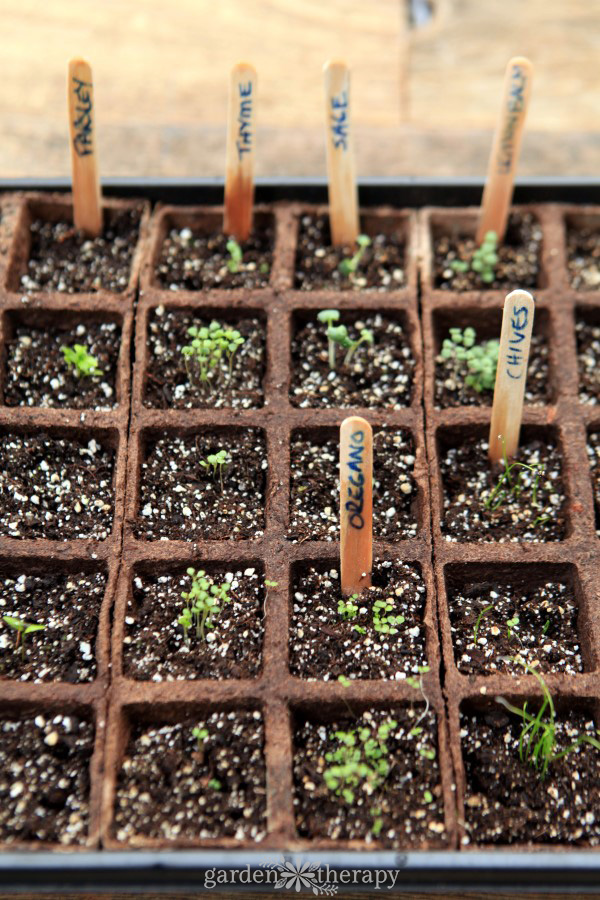
Frequently Asked Questions
How Long Do Herbs Take To Grow From Seed?
Herbs typically take 2 to 4 weeks to germinate from seed. Growth rates vary by herb type and environmental conditions. Basil, cilantro, and dill are fast growers. Rosemary and sage may take longer. Ensure proper sunlight, water, and temperature for optimal growth.
How To Grow Herbs From Seeds Inside?
Start with quality seeds and use a well-draining potting mix. Plant seeds at the recommended depth. Ensure adequate light, preferably from a south-facing window or grow light. Keep the soil consistently moist but not waterlogged. Maintain a warm temperature for optimal germination and growth.
Do I Need To Soak Herb Seeds Before Planting?
Soaking herb seeds before planting isn’t always necessary but can speed up germination. Some seeds, like parsley or cilantro, benefit from soaking for 12-24 hours. This softens the seed coat, allowing for faster sprouting. Check specific herb recommendations to decide if soaking is beneficial for your seeds.
What Herbs Are Easiest To Grow Indoors From Seed?
Basil, mint, parsley, chives, and cilantro are the easiest herbs to grow indoors from seed. They require minimal care and thrive in small pots. Ensure they get enough light and water regularly for best results.
How Do I Start Growing Herbs Indoors From Seeds?
Begin with quality seeds, potting soil, and containers. Maintain consistent moisture and provide ample light.
What Are The Easiest Herbs To Grow Indoors?
Basil, mint, and chives are simple and forgiving for beginners. They thrive indoors with little effort.
How Much Light Do Indoor Herbs Need?
Herbs need at least 6-8 hours of light daily. Consider using grow lights if natural light is limited.
Conclusion
Growing herbs from seeds indoors is simple and rewarding. Follow the steps outlined for successful herb gardening. Pay attention to light, water, and soil requirements. Enjoy fresh herbs year-round with minimal effort. Gardening indoors saves space and adds greenery to your home.
Experiment with different herbs and find your favorites. Remember, patience and care yield the best results. Happy gardening!


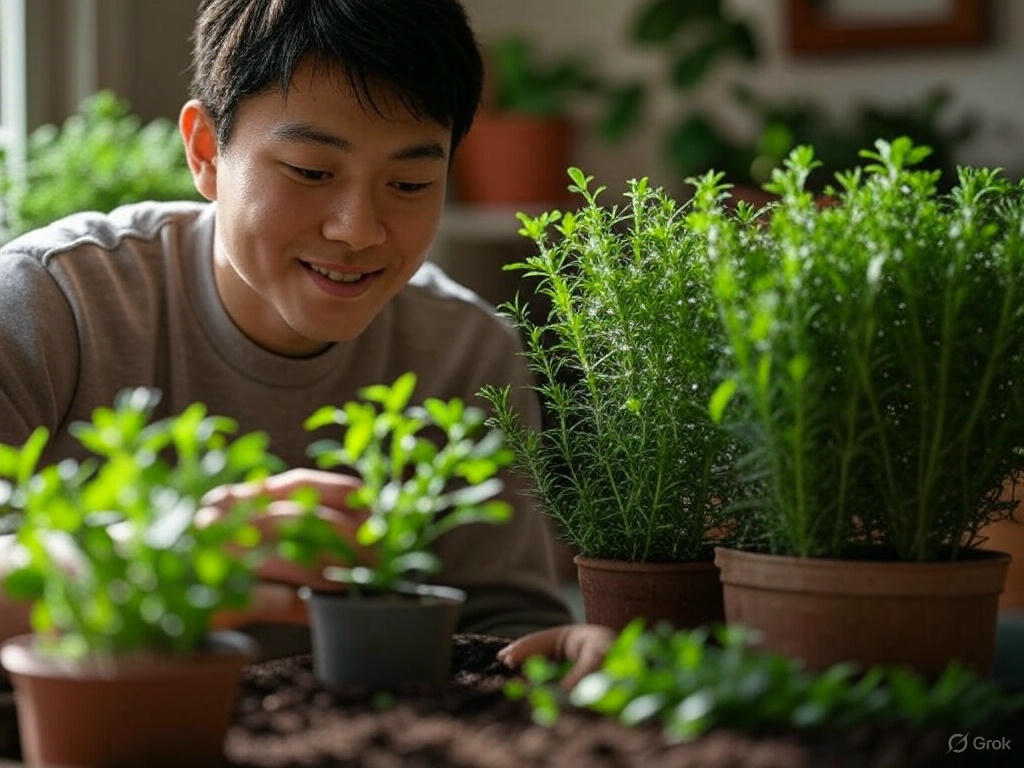

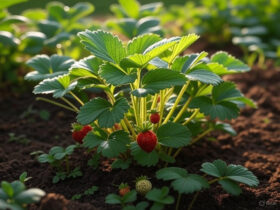



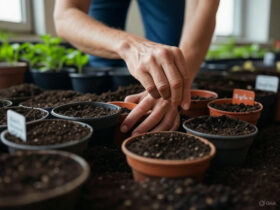
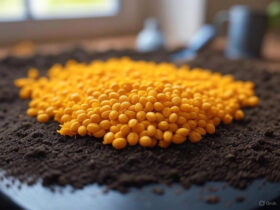
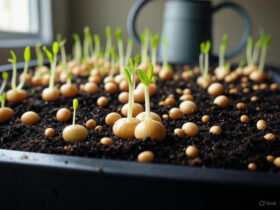

Leave a Reply